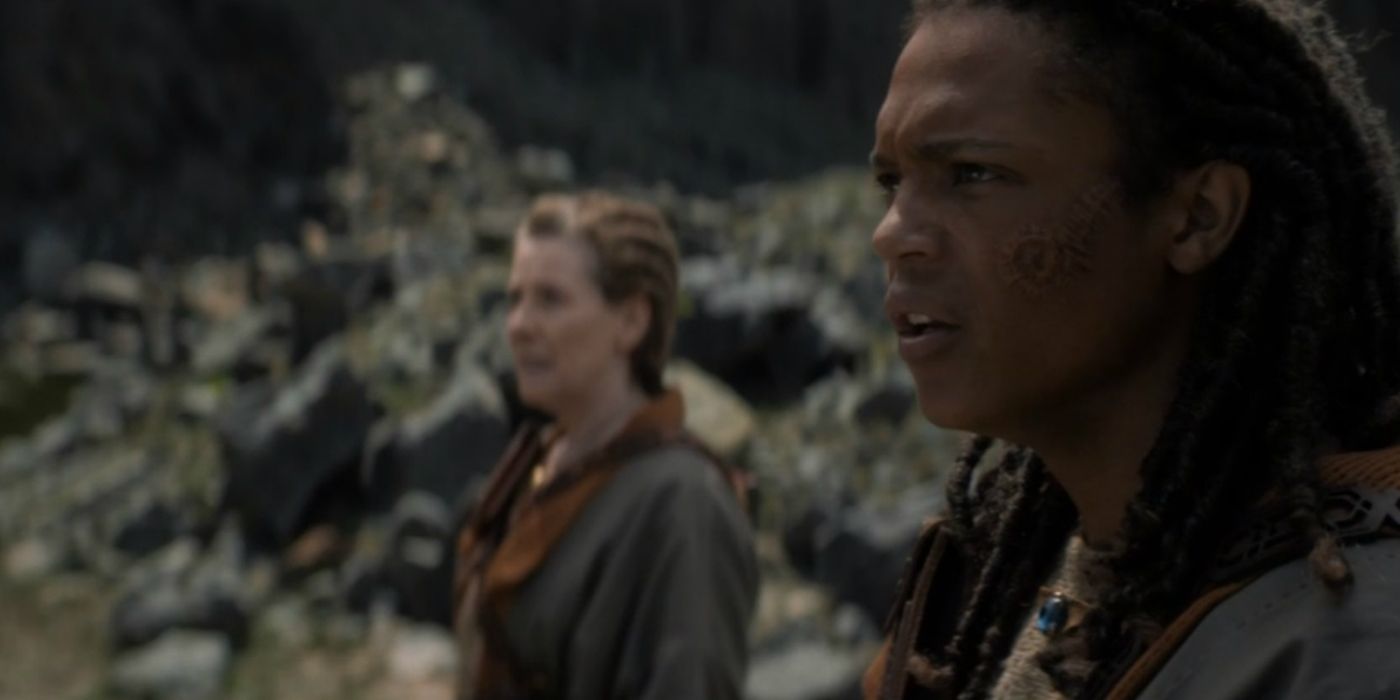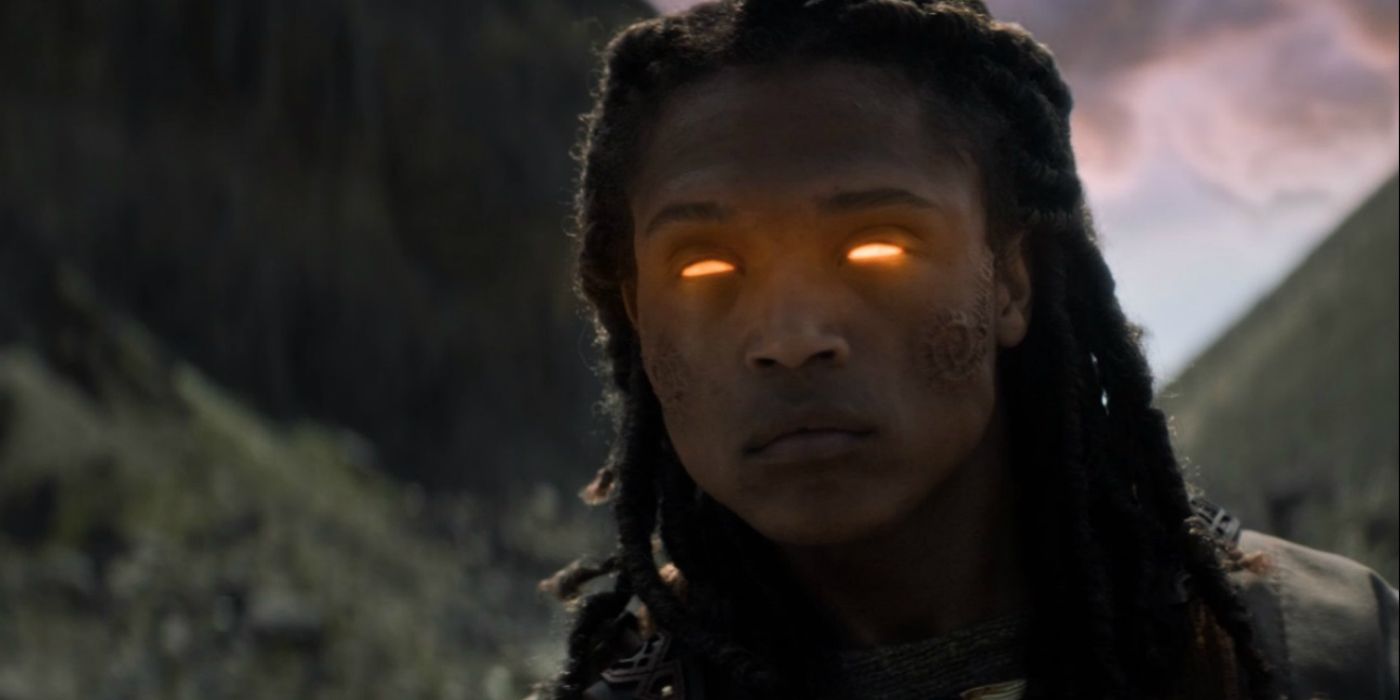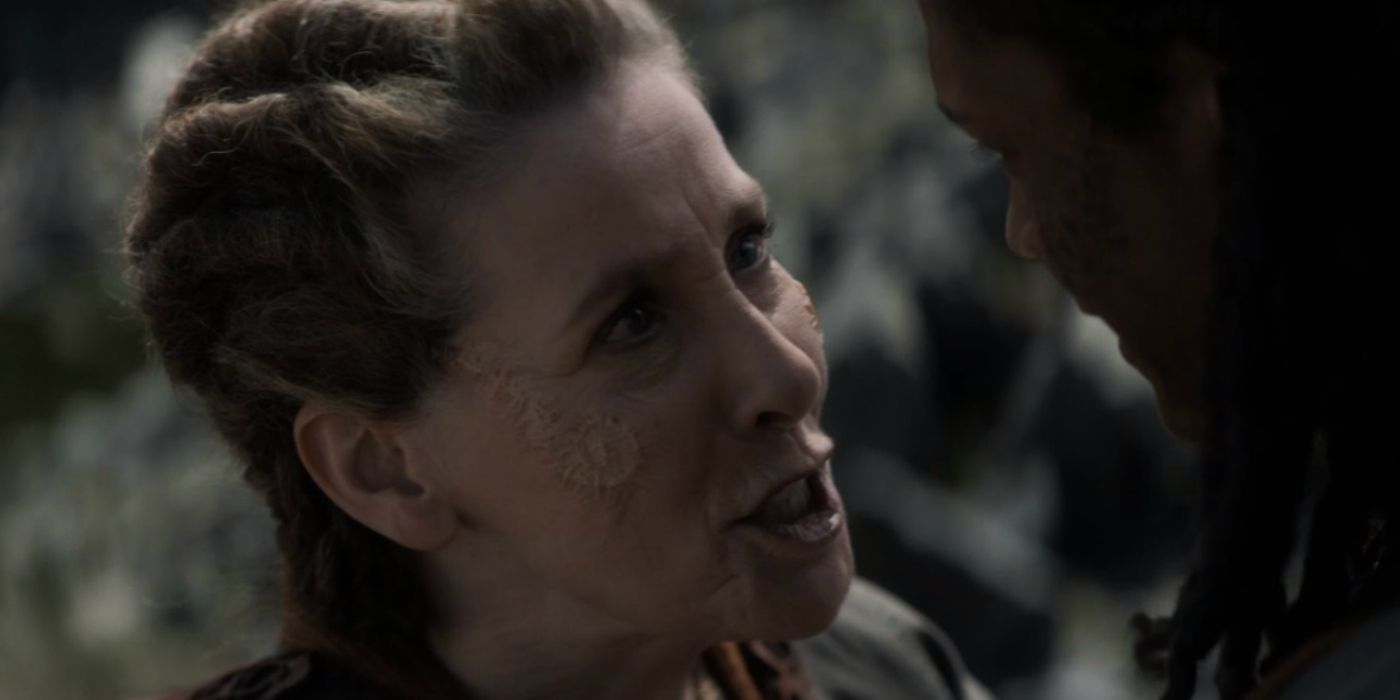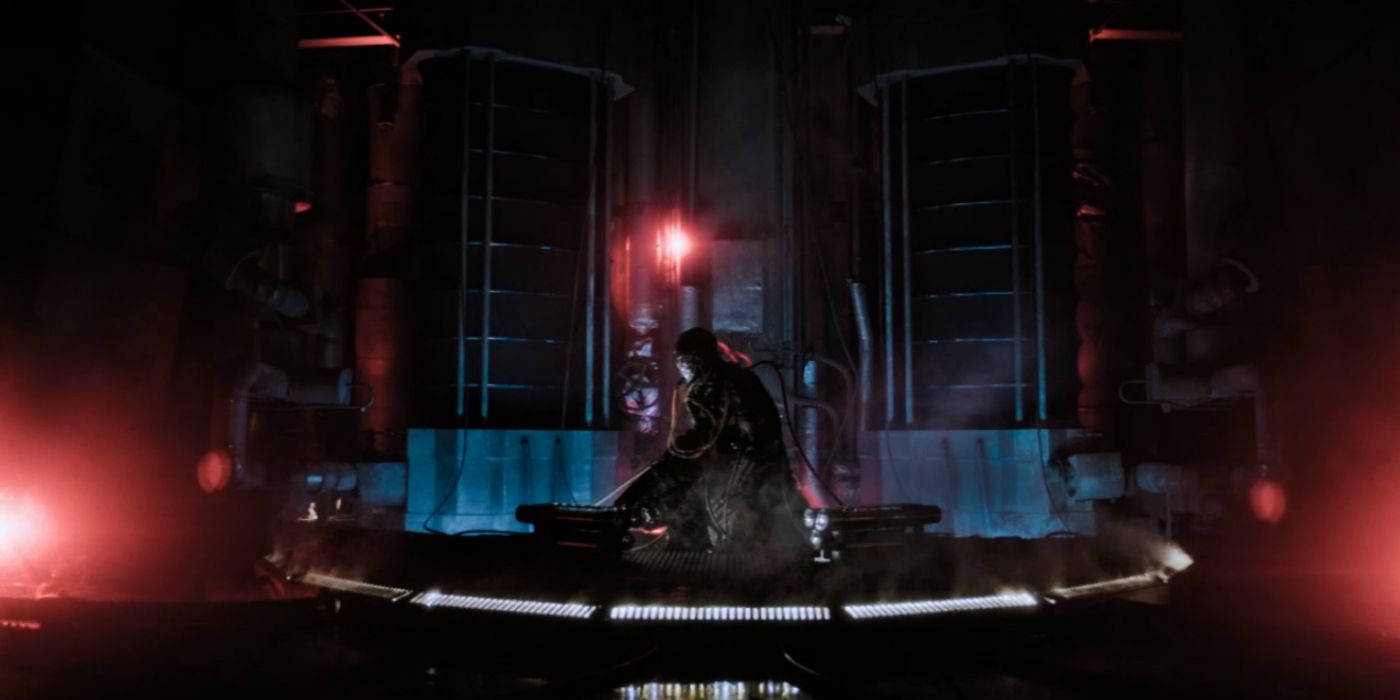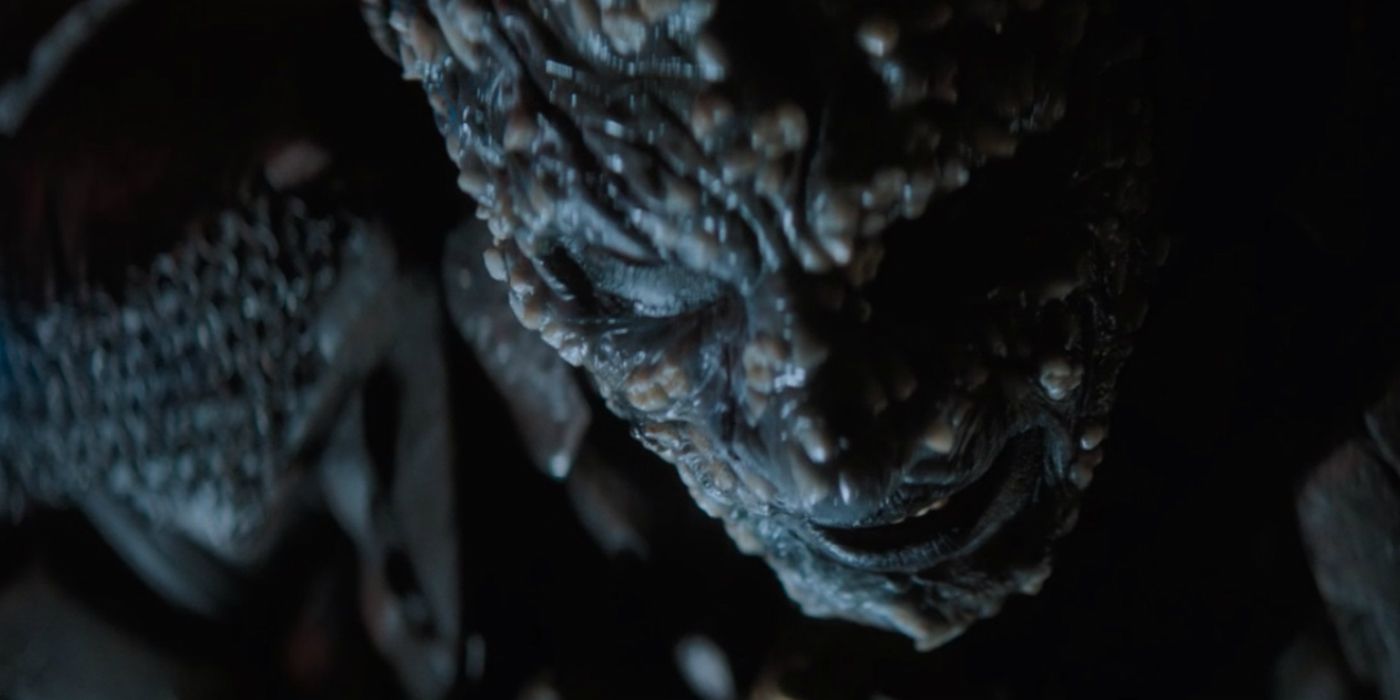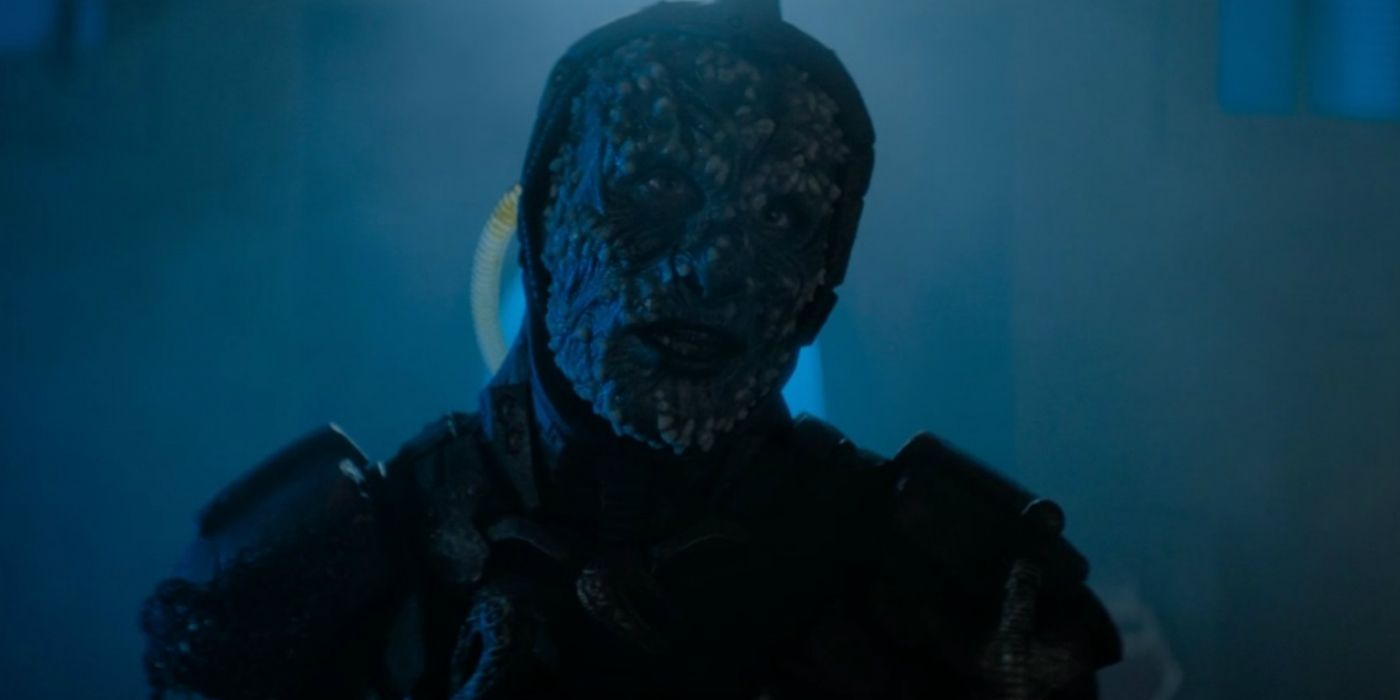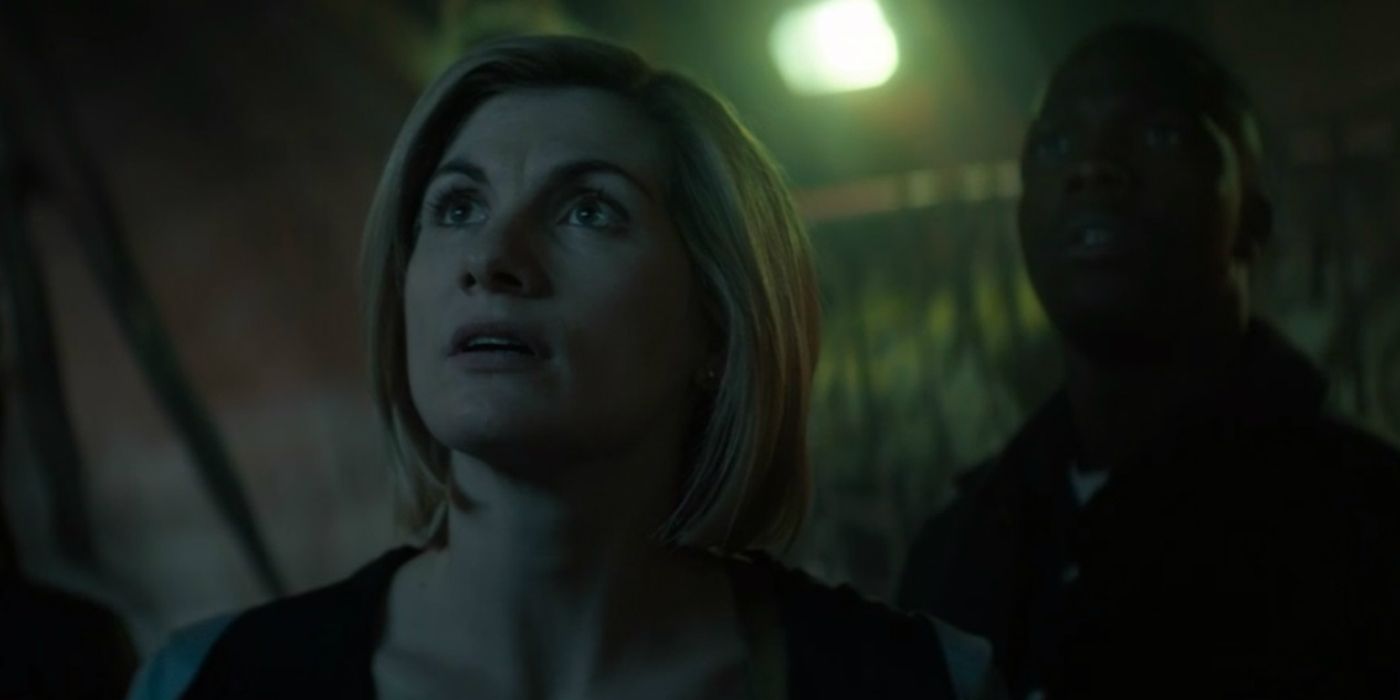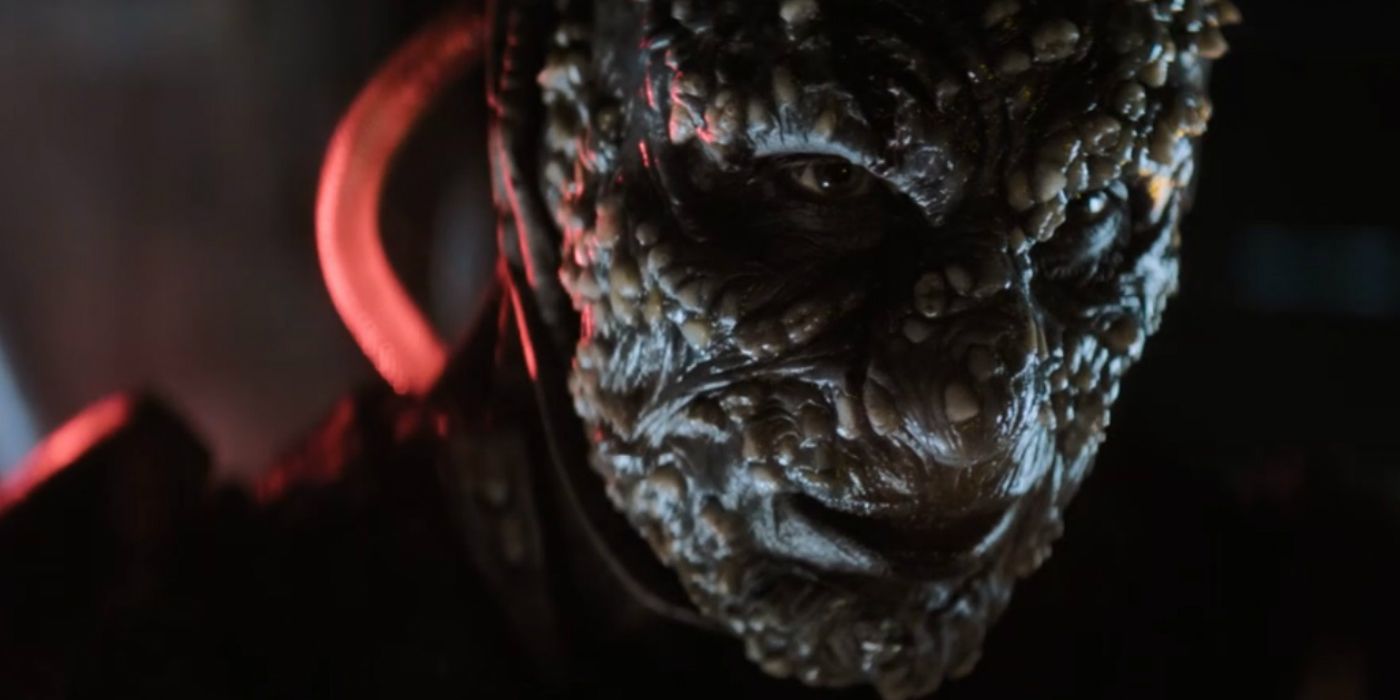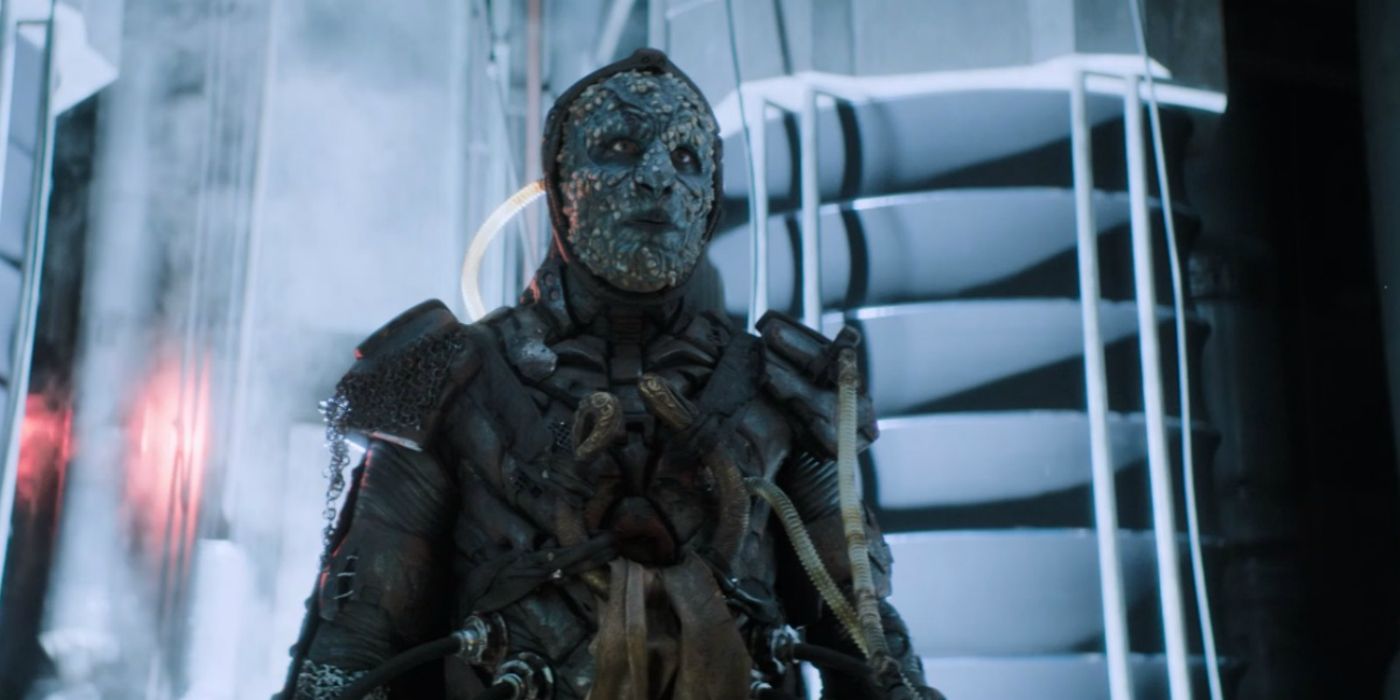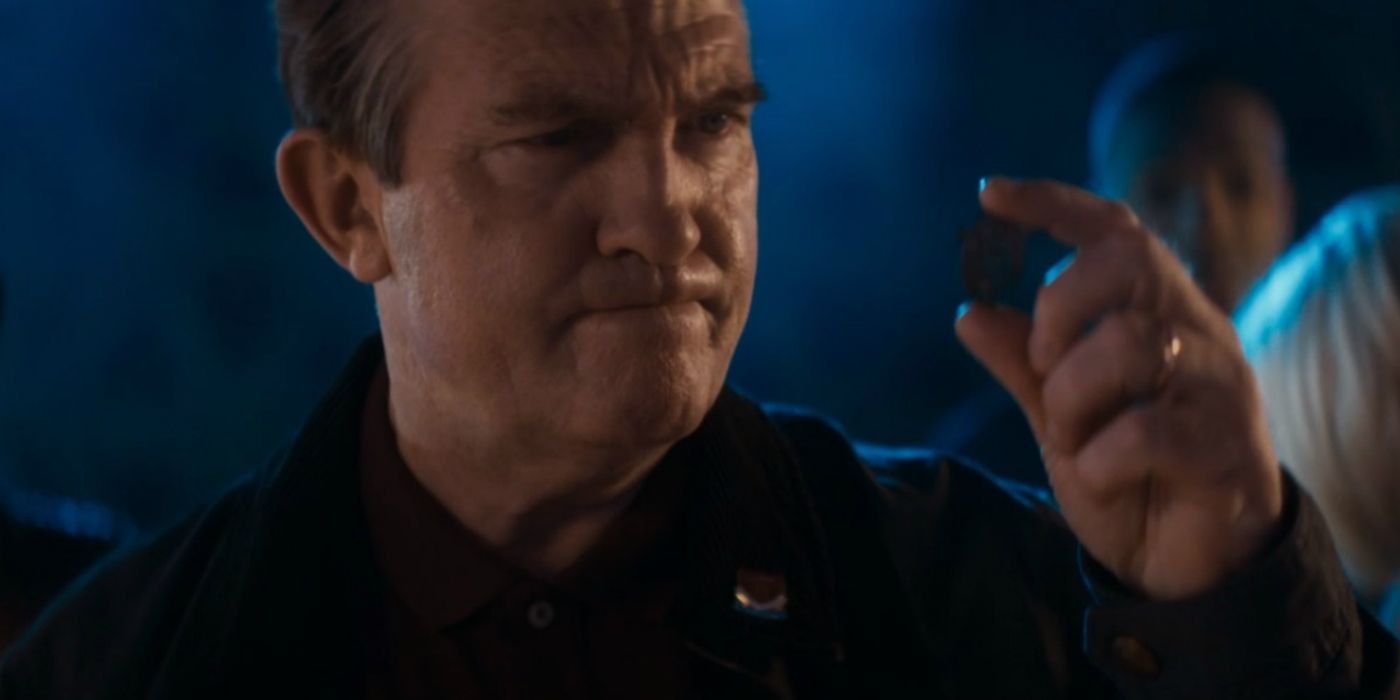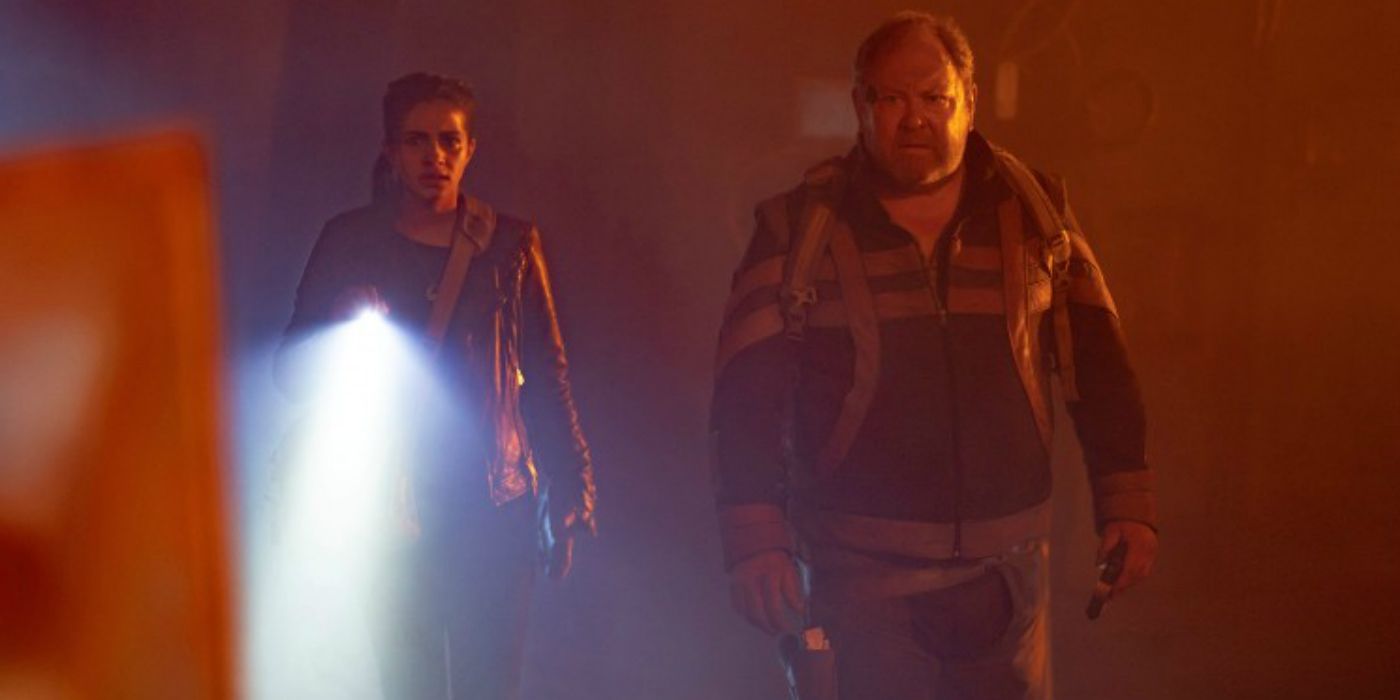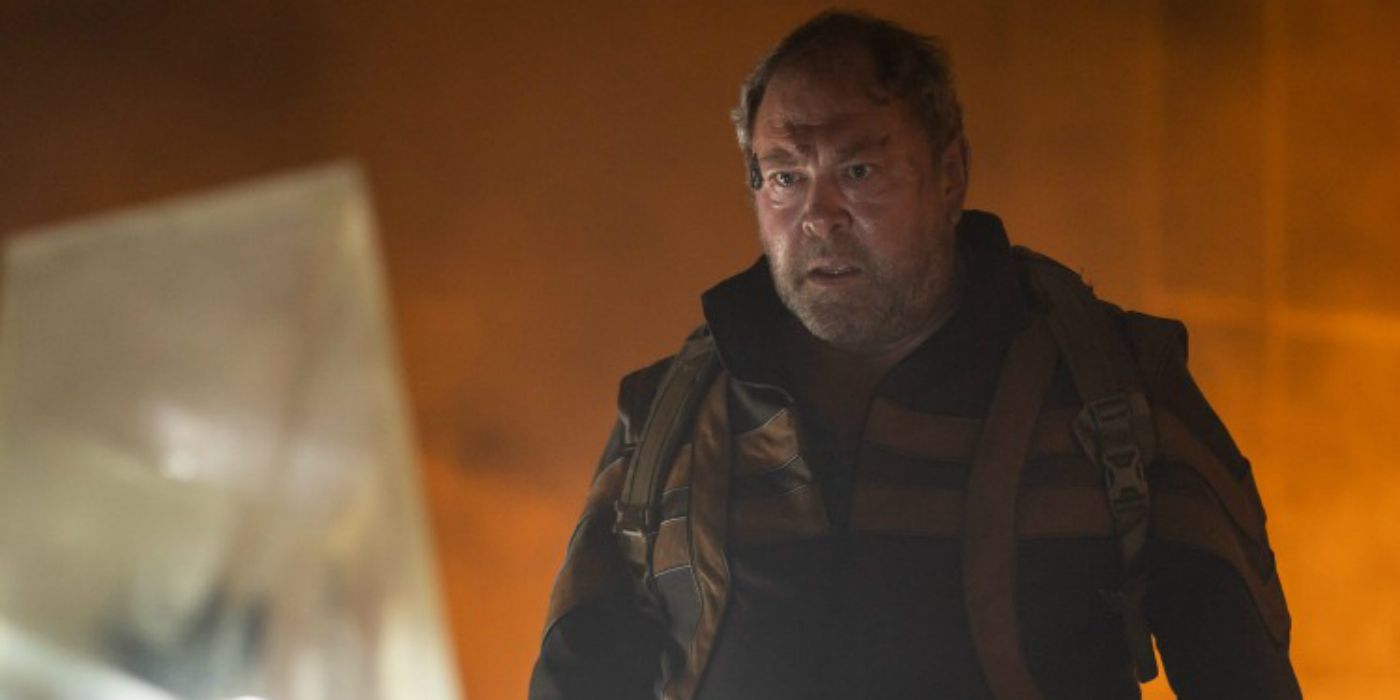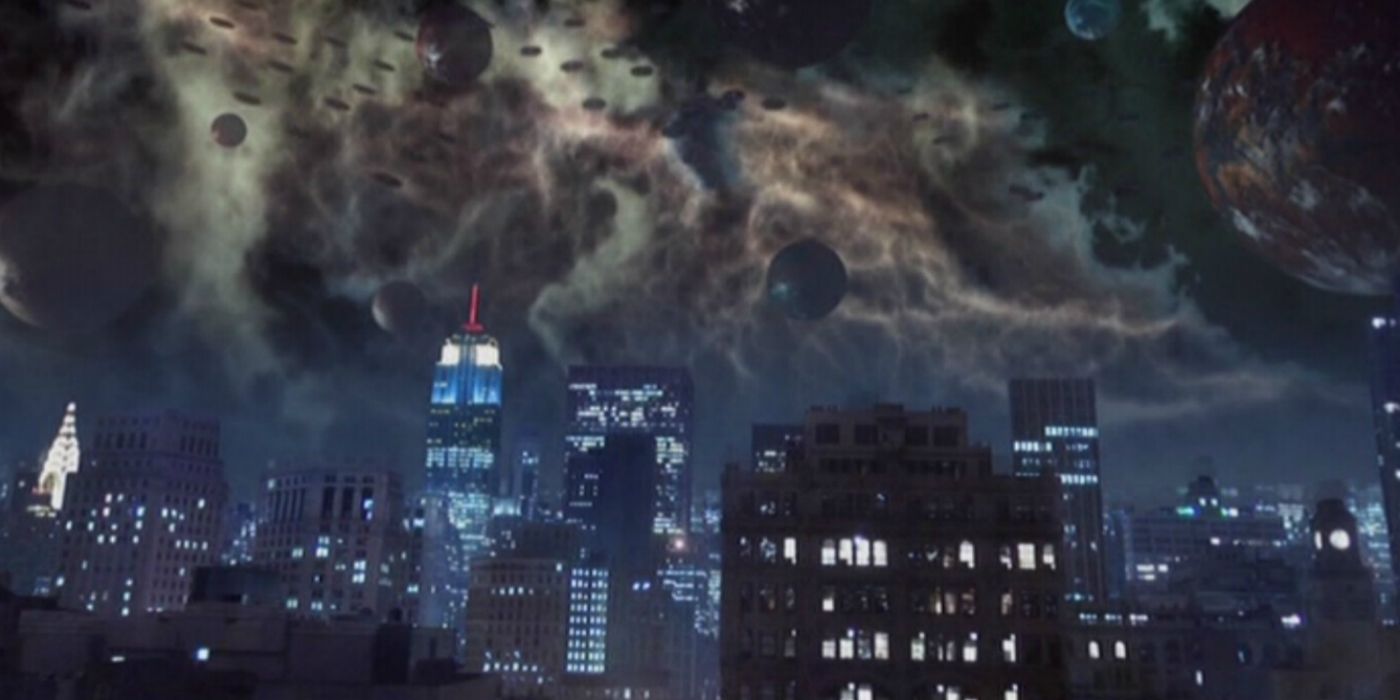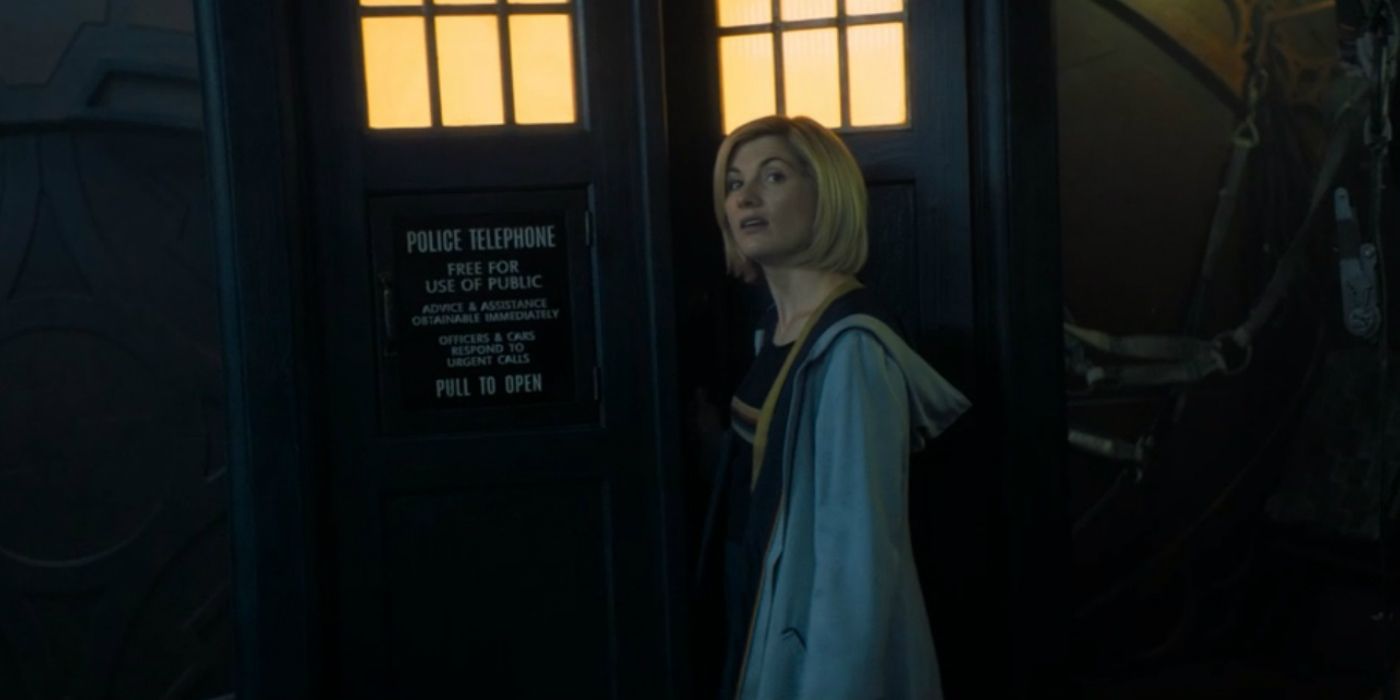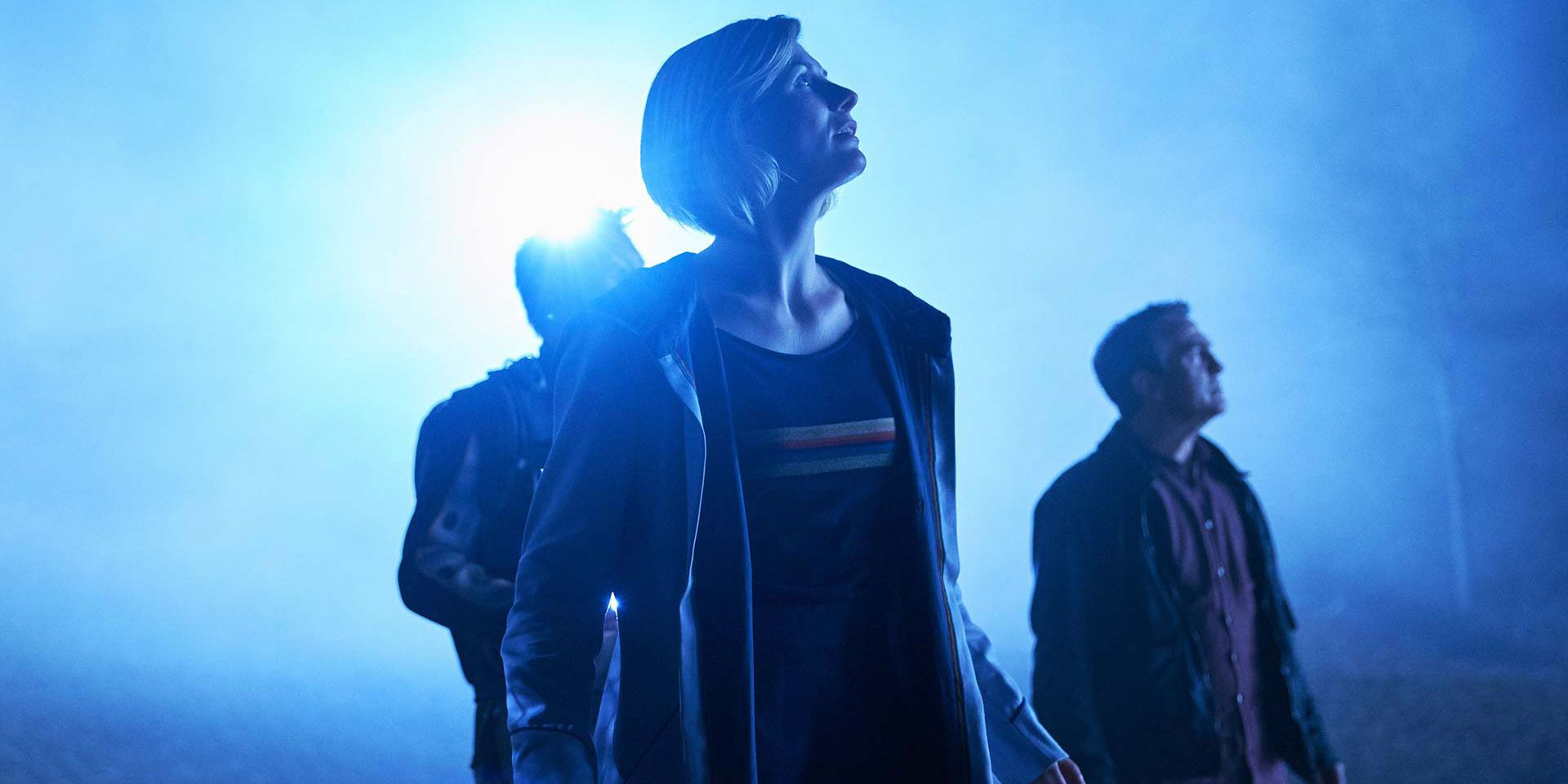The Doctor Who season 11 finale featured the return of this season's first villain - Tzim-Sha, the would-be ruler of the Stenza who the Doctor insists on calling "Tim Shaw" - but it's led to even more questions. It's been over 3,000 years since Tim Shaw last crossed paths with the Doctor and her friends, and his mind has fractured over the course of the millennia. He's gone full-on megalomaniac, seeking to destroy anyone who ever opposed the Stenza - even though the episode subtly implies the Stenza Empire has long since collapsed.
New showrunner Chris Chibnall and Thirteenth Doctor Jodie Whittaker have had a strong start. Quality was consistent, but the absence of an overarching narrative meant it didn't quite live up to its potential. The real star of this season was undoubtedly Bradley Walsh's Graham, and the relationship between Graham and his grandson, Ryan, came to a head in the final episode. The theme of "family" was at the heart of Doctor Who season 11, and that also came to a head in the final scenes; the Doctor happily decided her friends have become her new "fam."
Related: Who Are The Doctor's Family?
The Doctor Who season 11 finale had the rather unusual title, "The Battle of Ranskoor Av Kolos." It was named after the ravaged world that the TARDIS arrived on, although - in typical Doctor Who fashion - the Doctor and her friends arrived when the battle was already over. They had to deal with the aftermath - and save the Earth from destruction.
18. Who Are The Ux?
The Doctor Who season 11 finale introduced a brand new alien race, the Ux. The Ux are a unique race, in that they possess the psychic ability to restructure reality itself with force of will. They can only be found on three planets in the universe, and only two exist at any one time. The Doctor describes them as "faith driven dimensional engineers," and two Ux are able to focus their power to literally tear holes in spacetime. The power of the Ux, combined with the technology of the Stenza, is able to compress entire worlds into stasis crystals. Horrifically, though, this is an act of planetary genocide - the instant eradication of all life on the planet.
17. How Did The Ux Possess Such Power?
One significantly important unanswered question, of course, is just how the Ux possess such powers. It seems the planet of Ranskoor Av Kolos is a maelstrom of psychic energy; presumably the Ux evolved in a natural state of synergy with the planet, and they became able to tap into its power. The Ux faith appears to periodically involve using their powers to restructure the planet's surface, which would perhaps stir up the maelstrom even further.
16. How Do The Ux Reproduce?
Not to be crude, but - if there are only ever two Ux at any one time, how do they reproduce? Perhaps the answer lies in their reality-manipulation power; when one of the Ux is dying, perhaps the other uses their power to revert them to childhood and begin again. But this is something that's not discussed in the Doctor Who season 11 finale, and likely will go unanswered for some time.
Related: Doctor Who Season 11 Is Fixing Tired Formula Problems
15. How Did Tim Shaw Get To Ranskoor Av Kilos?
Tim Shaw was introduced as the villain of "The Woman Who Fell To Earth," the Doctor Who season 11 premiere. He'd headed to Earth in order to hunt down a random human and prove himself worthy to rule the Stenza; naturally, the Doctor didn't take well to the idea of aliens using Earth as a hunting ground. When the episode ended, the badly-injured Tim Shaw teleported away, just as DNA bombs exploded in his body. It seems the energy released by the DNA bombs boosted the teleportation, and he arrived in a distant world - perhaps drawn to Ranskoor Av Kilos due to its reality distortions.
14. Were There Any Clues To Point To Tim Shaw's Return?
The first two episodes of Doctor Who season 11 had indeed hinted that the Stenza would be a recurring threat; they were introduced back in "The Woman Who Fell To Earth," and were revealed to be the villains behind the destruction of the planet Desolation in "The Ghost Monument." There's been no mention of the Stenza since, though, and there have been absolutely no hints that Tim Shaw in particular would return.
13. Why Did The Ux Think That Tim Shaw Was Their Creator?
The Ux religion apparently foretells a time when their deity, the Creator, will return to them. Tim Shaw's materialization seems to have matched with the Ux prophesies, and he was able to persuade them he really was their god. It's interesting to note that the younger, and less pious, Ux was restrained - suggesting he doubted Tim Shaw, but was overpowered.
Page 2 of 3: More Questions From The Doctor Who Season Finale
12. How Did The Doctor Recognize Stenza Technology?
It looks as though the Doctor has been swotting up on the Stenza in the TARDIS databanks. She's now able to recognize Stenza technology at a glance, and can name their homeworld. The Stenza can presumably count themselves lucky the Doctor hasn't paid a house call.
11. How Did Tim Shaw Recreate So Much Stenza Technology?
The Doctor Who season 11 finale revealed a fascinating new detail about the Stenza; they possess a hive mind. There are subtle hints that the Stenza have no natural ability to innovate at all, perhaps explaining why they'd forced the population of Desolation to create weapons for them in "The Ghost Monument." Notice that Tim Shaw hasn't developed the technology at all in the 3,407 years he's been on Ranskoor Av Kolos - the Sniper Bots are identical to the ones seen in "The Ghost Monument."
10. Do All Stenza Have Such A Long Life?
The Doctor may have brushed up on the basics of the Stenza, but she's more than a little surprised to find Tim Shaw is still alive. Even Tim Shaw makes a throwaway remark about the fact he's remarkably long-lived for his race, so he's probably been kept alive by the power of the Ux. Indeed, this may in itself explain why one of the Ux suspected he wasn't a god at all.
9. What Is A Neural Balancer?
The neural balancer seems to be a device that regulates the brainwaves, helping protect against psychic interference. It makes sense for the Doctor to have this kind of technology aboard the TARDIS; previous episodes of Doctor Who have shown that the TARDIS telepathic circuits can malfunction on occasion. The most notable example was the William Hartnell two-parter "The Edge of Destruction," which first introduced the idea of the telepathic circuits and saw the TARDIS crew turn against one another, driven to fits of paranoia. After a few such incidents, the Doctor would surely decide to stock up on something like the neural balancers.
8. Does The Doctor Follow Her Own Rules?
The Doctor has always objected to weapons - and yet, in the Doctor Who season 11 finale she tells her friends to pick up some guns and grenades. The Doctor admits that she does play a little fast and loose with her rules, but this is a particularly surprising example - there have been precious few previous episodes where any incarnation of the Doctor has been happy with a weapon being used. These have frequently been the darkest moments in the Doctor's life, such as "The Day of the Doctor" or "Dalek."
Related: Why Doctor Who Has Completely Divided Fans This Season
7. Who Did Invent Wellies?
The Doctor has always loved to chatter aimlessly, and this time she randomly suggests that she "half-invented" the wellington boot. In reality, the wellington was created in the 18th Century when the Duke of Wellington instructed his shoemaker, Hoby of St. James's Street, London, to adapt the traditional Hessian boot. A popular political figure and a celebrated war leader, the Duke of Wellington's new footwear became highly fashionable.
Page 3 of 3: Even More Questions From The Doctor Who Season Finale
6. Who Are The Council Of Nine Planets?
The Council of Nine Planets have responded to the destruction of five worlds with a show of force - one that proved unsuccessful, as it was destroyed by the Ux. The Doctor Who season 11 finale doesn't explain who the Council of Nine Planets really are, but it's possible to join the dots. When Tim Shaw first appeared in "The Woman Who Fell To Earth," he claimed the Stenza were the "Conquerors of the Nine Systems." It sounds as though galactic politics have changed somewhat in the 3,407 years Tim Shaw has been stranded on Ranskoor Av Kolos, and the Stenza Empire has given way to an alliance between the worlds they had once conquered. That may well be why the Doctor didn't bother paying a visit to the Stenza to overthrow them; because she checked the history books, and learned their empire was doomed.
4. What Worlds Did Tim Shaw Target?
Tim Shaw targets every single world that has ever dared to defy the Stenza. If the Stenza Empire really has fallen, then it's possible the five destroyed worlds were members of the Council of Nine Planets. It's quite possible he aimed to use the Ux against all nine of these worlds - but changed his mind when the Doctor arrived, and he decided it would be far more satisfying to destroy Earth in the Doctor's presence.
3. Did You Spot The David Tennant And Christopher Eccleston References?
The Doctor Who season 11 finale sees the Doctor use the TARDIS for another amazing feat. She blends Time Lord technology with the science of the Stenza and the power of the Ux, and "splits the dematerialization field" to use the TARDIS to transport the five ravaged worlds back to their own places in spacetime. Insisting this unlikely plan will work, she brags, "I once towed your planet halfway across the universe with this TARDIS, and turned a Slitheen back into an egg." Those are references to the David Tennant episode "Journey's End" and the Christopher Eccleston episode "Boom Town."
Related: Doctor Who Highlights A Difference Between Jodie Whittaker & David Tennant
2. What Is The Doctor's View Of Faith?
The last episode introduced the Solitract, a powerful being that appeared to be a Gallifreyan creation myth. In "The Battle of Ranskoor Av Kolos," the Doctor finally gives her own view on religion - and it's a fascinating take. "None of us know for sure what's out there," she tells the Ux. "That's why we keep looking. Keep your faith. Travel hopefully. The universe will surprise you. Constantly." It seems the Doctor is rather more an agnostic than an atheist.
1. What Is The Timeless Child?
On the face of it, "The Battle of Ranskoor Av Kolos" seems to wrap up Doctor Who season 11 quite nicely. But it's worth closing with the one important question that remains unanswered: what is the "Timeless Child?" Back in "The Ghost Monument," the Doctor was attacked by the psychic creatures known as the Remnants. They were able to reach into her mind and draw forth a fear she had buried deep within herself; something they called "the Timeless Child." That throwaway reference has yet to be explained; perhaps the New Year Special, or Doctor Who season 12 in 2020, will pick up this particular plot thread.


